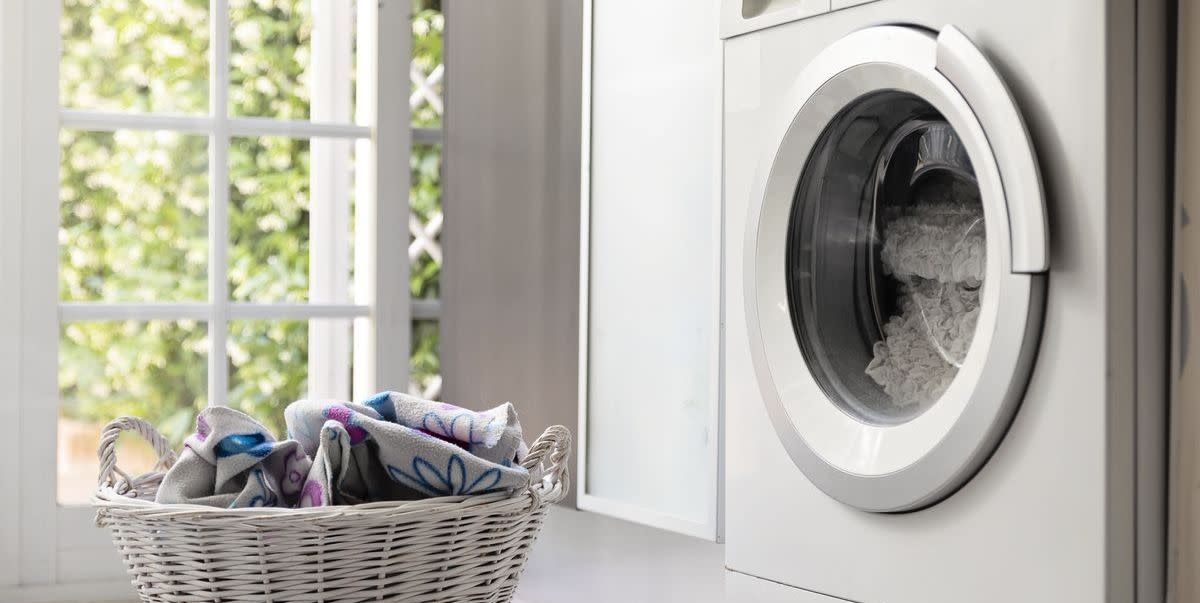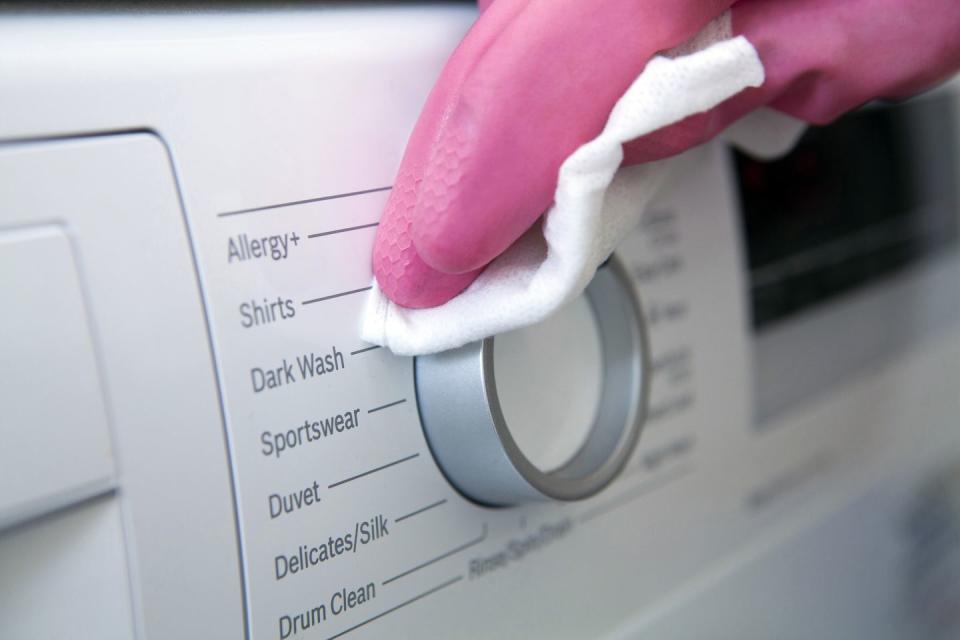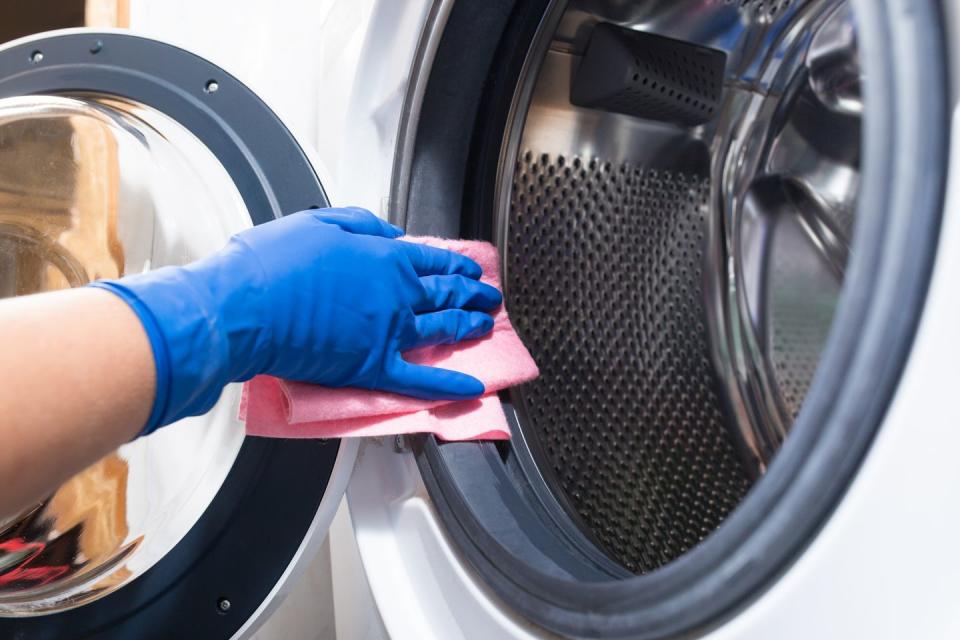How to Clean Your Washing Machine and Avoid Grimy Buildup

"Hearst Magazines and Yahoo may earn commission or revenue on some items through the links below."
If you've ever faced the tragedy of pulling your favorite jeans out of the washer to find them smelling, well, off, you've learned a strange but true fact: the appliance that cleans your clothes needs cleaning, too. 🤯
Yep, just like microwaves, air fryers and even electric kettles, washing machines require a regular scrub-a-dub-dubbing to keep them performing their best. In fact, get ready for another shocker—your washer should probably be cleaned every month or two. But what if you've never cleaned your washer once (hey, no judgment), much less a dozen times a year? You probably have no idea how to clean a washing machine.
That's why we reached out to John Larson, CEO of BestCleaningTools, a commercial and residential cleaning company, to get some expert guidance. According to Larson, keeping your washing machine pristine is "an important task that ensures your clothes come out fresh and clean every time. Over time, detergent residue, dirt, and mildew can build up inside the machine, which can cause odors and make your clothes look less clean. Regular cleaning can also help prolong the life of your washing machine."
With this crucial appliance costing hundreds, if not thousands of dollars, extending its lifespan for as long as possible just make good financial sense. After all, with all that money saved, you can always renovate your laundry room! So, grab your laundry bag and read on for answers to all your biggest questions about how to clean a washing machine. Then, set aside a little time for that spring cleaning. Your favorite jeans will be glad you did.
What's the best way to clean your washing machine?
If you want to keep your machine performing at its peak capacity for as long as possible, clean it at least every other month, or monthly. If you wash clothes frequently or wash very dirty clothes, have hard water, or use a lot of detergents or fabric softener, Larson recommends cleaning your machine more often.
While you should always defer to any cleaning instructions in the user manual, if there aren't any, or you can't find your manual, follow these steps:
Empty the machine and turn off the power by unplugging it or turning off the circuit breaker.
Using a damp microfiber cloth, wipe down the exterior of the machine to remove any dirt or debris that may have accumulated on the outside. Pay extra attention to areas around the control panel and the door seal, which are prone to dirt and grime.
Make a cleaning solution by mixing 1 cup of white vinegar and 1 cup of baking soda in a bowl. Distilled white vinegar is a natural sanitizer and deodorizer, while baking soda is a mild abrasive that can help remove stains and buildup.
Add the solution to the detergent dispenser to loosen any built-up gunk. Let it sit for a few minutes, then run a wash cycle on hot. For particularly grimy washers, pause the cycle once the tub is filled and let the vinegar and water sit for about an hour before restarting the machine.
Once the cycle is complete, use a scrub brush or toothbrush to scrub the inside of the drum. Pay extra attention to areas that may have built-up mildew or stains.
Run another cycle on the hottest setting to rinse out the drum. This will ensure that all the cleaning solution is removed and the drum is completely clean.
Using a clean, damp cloth, wipe down the drum and door seal to remove any remaining dirt or debris.
Leave the door open to allow the machine to air dry completely. This will help prevent mildew from forming inside the machine.

Is bleach or vinegar better to clean your washing machine?
While some experts suggest using bleach to clean a washer, many, including Larson, say stick with vinegar and baking soda. "Together, white vinegar and baking soda make an effective and safe cleaning solution that can be used regularly to keep your washing machine in good working condition," Larson notes. "They are both inexpensive, widely available, and non-toxic."
Never use white vinegar and bleach together! They combine to form deadly chlorine gas, which is toxic in even small amounts.

How do I clean a smelly washing machine?
Following the above steps should take care of any unpleasant odors in your machine. If they continue to linger, double-check around the gaskets, or rubber door seals, to make sure you've completely eliminated any mold or mildew. If not, scrub the area with a toothbrush dipped in distilled white vinegar, wiping it clean with a damp microfiber cloth. Then dry it with a clean cloth.
You can help prevent bad smells by making sure you're using the recommended detergent in the correct amounts for your machine. Also, be sure to leave your washer door open until the entire machine has completely dried.
How do you self-clean a washing machine?
Self-clean is a special cycle on your machine that eradicates built-up dirt and detergent residue, preventing mold and mildew from forming. If your washer has a self-cleaning cycle, simply follow the steps outlined in the instruction manual to use it. Typically, the water will get hot enough to sanitize the machine without any added cleaners, though you may want to wipe down the exterior of it. If mold or mildew has already formed in your washer, some brands may suggest adding bleach to the self-clean cycle.
You Might Also Like

